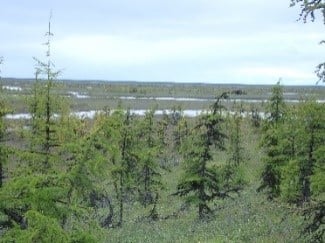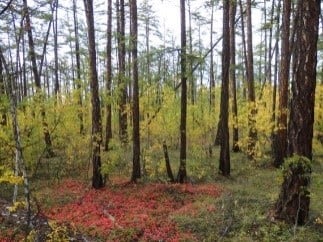I visited Sakha Republic in northeastern Siberia during July-September, 2017. The aims of my stay were 1) to conduct summer field surveys and 2) to develop future research opportunities with scientists specialized in subarctic ecosystems.
Large areas of northeastern Siberia are covered by taiga forests, which play critical roles in global carbon and nutrient cycles. High-latitude regions have experienced rapid environmental changes that can affect carbon fluxes (fixation and emissions) of the forests. I mainly focus on carbon dynamics in the soils, as soils contain a large amount of organic carbon which can be a source of greenhouse gases under projected warming. I conducted field works in taiga and taiga-tundra ecotones and collected data to estimate carbon stocks and respirations in the soils.
Over the summer, I used facilities of North East Federal University (NEFU) and the Institute for Biological Problems of Cryolithozone (IBPC), Siberian Branch of Russian Academy of Science. The field research was conducted in the Spasskaya-pad research station (taiga forests) and Kodak station in Chokurdakh (taiga-tundra ecotone). These stations were established by research teams in Russia, Japan and European countries (mainly Netherlands and Switzerland) more than 20 years ago. I was pleased to visit and conduct surveys in such well-established scientific stations in beautiful, unique, and dynamic ecosystems. My first survey in northeastern Siberia went successfully, with help from many researchers and staffs. Still, conducting international research has room for improvements considering the volume of paperwork (thus time and money) required, for example, to acquire a visa, to transport equipment and samples, to share data, etc. Arctic regions are unique and important for global environmental issues, and better working conditions would help further research activities on these regions.
I would like to thank all the people who helped me over the summer. I hope many people will have a chance to get involved in arctic researches, as this area is super fascinating.
Yumiko Miyamoto (Hokkaido University)

Beautiful larch trees in the taiga-tundra ecotone (Kodak station, Chokurdakh)

Fall color of a larch forest (Spasskaya-Pad Research Station)




